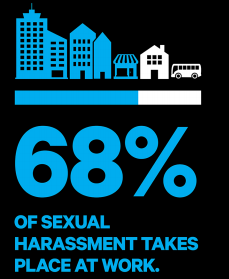Is your organisation at risk of creating a culture of sexual harassment? Image Source: Human Rights Commission In this article we will briefly explore five organisational risk factors that may lead to a culture where sexual harassment is present. This list is not exhaustive. Risk factor 1: Workplaces where “banter” is the norm Many people say that banter in the workplace is normal and good fun, and helps people enjoy being at work – but there is a fine line between banter and harassment. Jokes and banter of a sexual nature can be sexual harassment if they are unwelcome and, in the circumstances, a reasonable person would anticipate the…
Is your organisation at risk of creating a culture of sexual harassment?
 Image Source: Human Rights Commission
Image Source: Human Rights Commission
In this article we will briefly explore five organisational risk factors that may lead to a culture where sexual harassment is present. This list is not exhaustive.
Risk factor 1: Workplaces where “banter” is the norm
Many people say that banter in the workplace is normal and good fun, and helps people enjoy being at work – but there is a fine line between banter and harassment. Jokes and banter of a sexual nature can be sexual harassment if they are unwelcome and, in the circumstances, a reasonable person would anticipate the possibility that the conduct would make the person being harassed feel offended, uncomfortable, humiliated or intimidated. While we can’t and shouldn’t ban some banter, an organisation needs to be proactive in driving a respectful culture and have effective and trusted policies as well as processes for reporting grievances.
Risk factor 2: Isolated workplaces
Australian workplaces are often geographically dispersed, with employees working in small groups and having fewer opportunities to interact with their Head Office. This can enable harassers to have easy access to their targets and significantly reduce the number of witnesses. In addition, targeted employees may be unaware of how to address harassment issues and may be reluctant to call their managers for assistance. This can be mitigated through effective and well-constructed eLearning training with reference to the values, policies and processes the organisation has for driving a respectful culture.
Risk factor 3: Young workforces
Employees who are new to the workforce may be less aware of laws and workplace norms and may be more likely to engage in sexual harassment because they lack the maturity to understand the consequences of this behaviour. On the other hand, young employees may lack the self-confidence to resist unwelcome overtures or challenge conduct that makes them uncomfortable. They may be more susceptible to being taken advantage of by older co-workers or superiors. We should not assume young people understand the expectations of professional workplaces and hence effective induction and training is essential.
Risk factor 4: Workplaces with “high value” employees
Many workplaces have high performing employees who contribute significantly to the organisation’s bottom line but care little about the quality of relationships with other workers. This is a risk factor for two reasons: (1) management is often reluctant to jeopardise high value employee’s economic value to the employer and (2) high value employees may perceive themselves as exempt from workplace rules or immune from consequences of their misconduct. It’s a matter of putting the workplace culture as a priority rather than satisfying the needs of high performers.
Risk factor 5: Workplaces that tolerate or encourage alcohol consumption
Several of our investigations into allegations of sexual harassment have identified alcohol consumption in the workplace or at work-sanctioned functions as a major contributing factor in this behaviour. Alcohol has a wide variety of effects on physiology and behaviour. One of the most well-recognised behavioural effects is disinhibition, where behaviours that are normally suppressed are displayed following intoxication. A large body of evidence has shown that alcohol-induced disinhibition in humans affects social, sexual and decision-making behaviours.
Recent articles
![Lee Witherden v DP World Sydney Limited [2025] FWC 294 (2) Workplace policies](https://ihraustralia.com/wp-content/uploads/bb-plugin/cache/Lee-Witherden-v-DP-World-Sydney-Limited-2025-FWC-294-2-1024x539-landscape-dc731230e07743843bfa2c830cc42561-.png)
Smart Workplace Policies, Stronger Cultures: Compliance Made Clear


